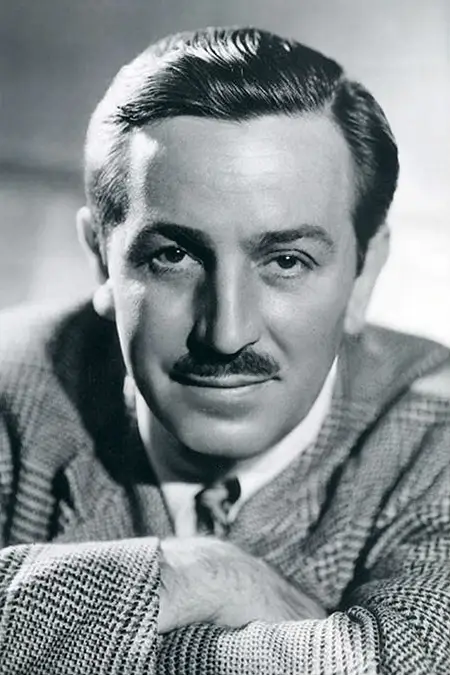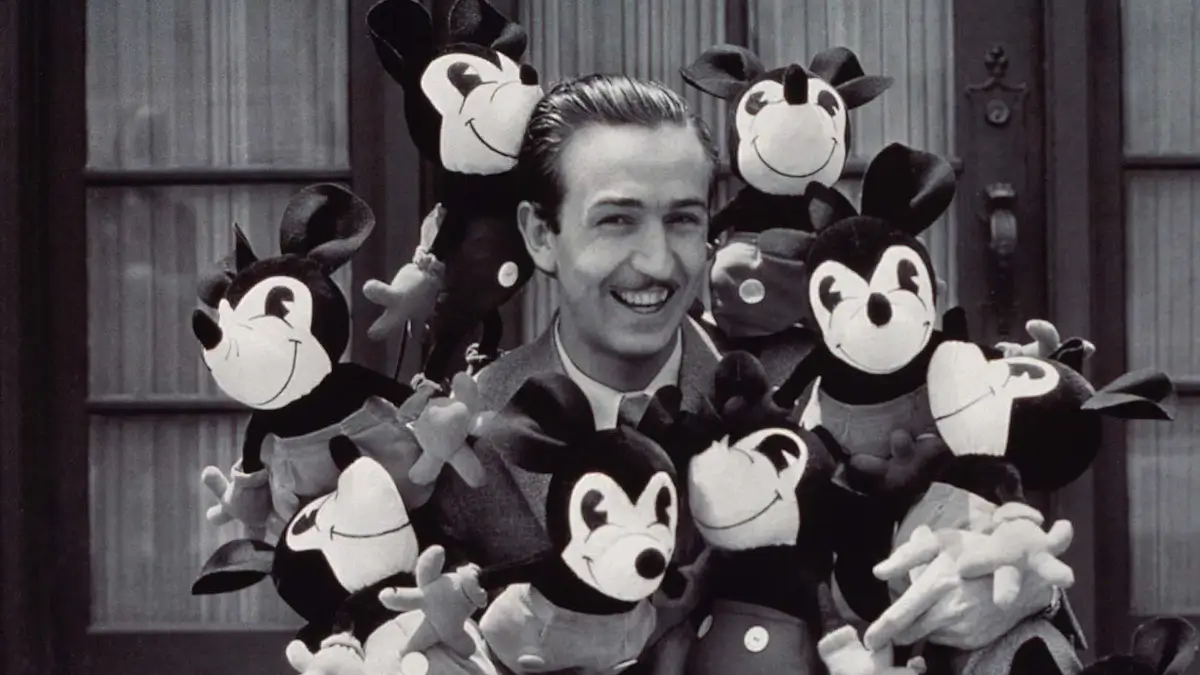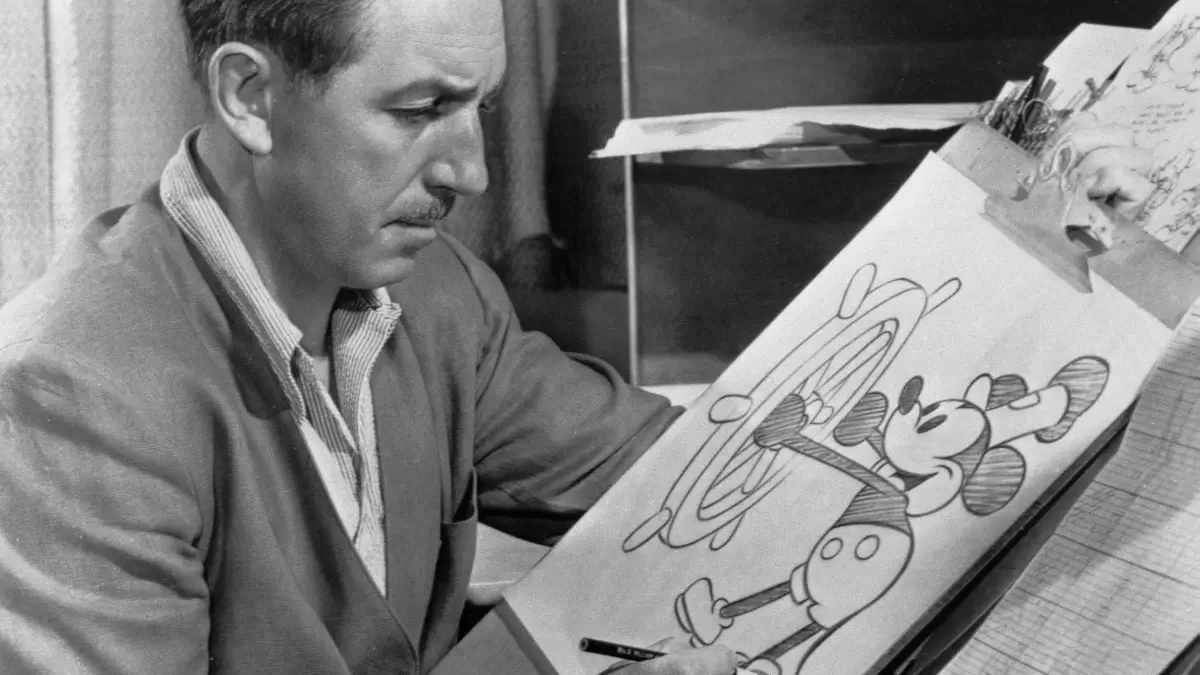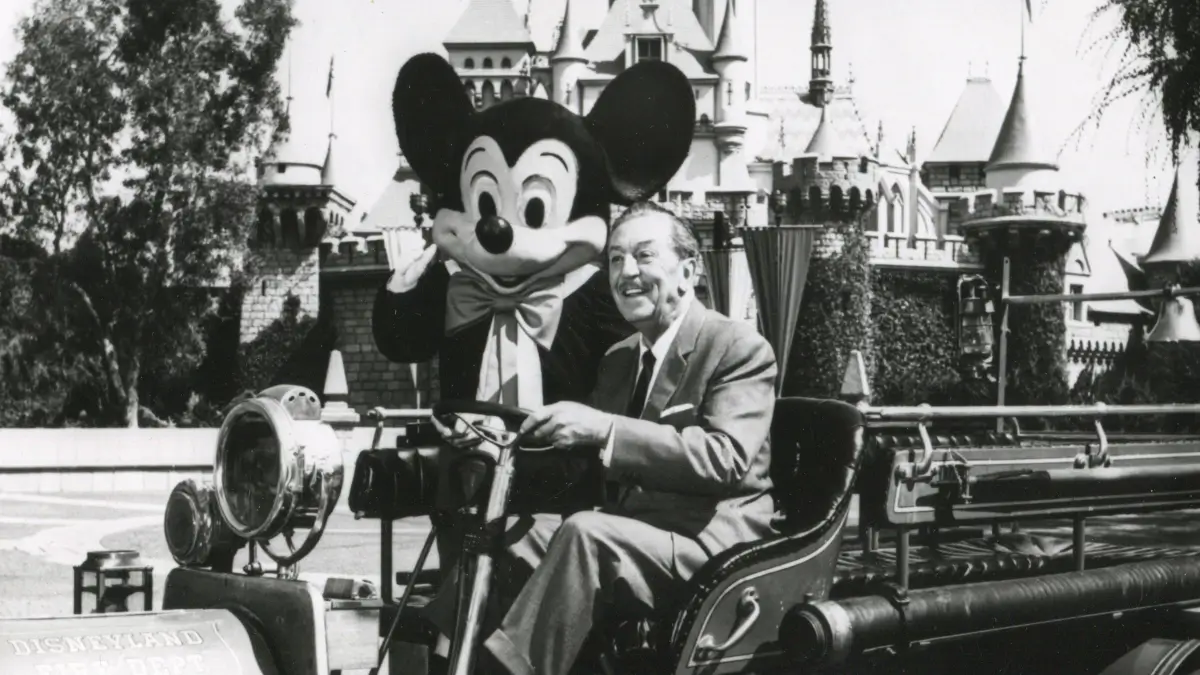
The Legacy of Walt Disney
Walter Elias Disney was born in Chicago in 1901 to parents Elias Disney and Flora Call Disney, he was the fourth born born son, even from an incredibly young age Walt was always very creative and artistic and most of all very entrepreneurial.
Starting at around the age of 7 he would draw various sketches, and sell them to all his neighbours. This would go on to potentially spark his passion for creativity as when he entered high school he would go on to join the school's paper making cartoon comic strips. This leads him to join the prestigious Chicago Academy of Fine Arts, where he would attend evening classes learning the art of cartooning.
When he turned 16 though he decided that it would be best to drop out of school, and instead he decided that he would like to join the army for which he was prompty rejected due to him being underage. This would not deter him, instead he attempted to join the Red Cross for which he promptly lied about his age so he would not once again be rejected like he did prior, Walt was then able to serve at the tail end of World War One where he was serving as a driver in France, before once again making it back to America where he would join the Pesmen-Rubin Commercial Art Studio.
Unfortunately his stint at the company wouldn't last for very long as the companys revenue began to decline, Walt was layed off shortly after, but this can also be seen as a bit of a positive as in doing so he decided to create his own company along with his new found friend Ub Iwerks who also worked for the commercial art studio, but who was also layed off alongside Disney.
This was not a very sucessful business venture as the company failed to create any worthwhile revenue, so Walt decided that he would join the Kansas City Ad Network, which was closely followed by Ub Iwerks who decided it just wasn't worth it to run singlehandedly run the company on his own. It was during his work at the Ad company that Walt began to show an interest in animation.
Once again starting a new company, this time with Fred Harman who also worked with Walt at the company. The pair decided that they would create short cartoons titled 'Laugh-O-Grams' short cartoon animations that would be shown primarily at the Newman Theatre. This in turn became a sucess for Walt and his business partner, which led them to take on more animation artists but once again was not generating enough income for the company and in 1921 they had to file for bankruptcy.
Moving to Hollywood
Walt was nothing but tenacious which led him to move to Hollywood only a couple of years after his last failed business venture. This decision was partly done so that he could be closer to his brother, who at the time was recovering from a horrible illness. Walt and his brother Roy would then form a new company called Disney Brothers Studios, this would eventually be rebranded to the name we all know and love The Walt Disney Company.
They began work on an amalgamous series mixing both animation and cartoon asthetics, this series of short films was known as Alice Comedies which ran for a couple of years, by which point Walt was ready to move on to something new and fresh. This led to Disney rehiring his old friend Ub Iwerks, and together they created a character which some of you may or may not be familiar with and that is Oswald the lucky rabbit. Unfortunately there were many complications with Universal who had the rights to Oswald and following payment disputes, along with the pinching of many of Disney's animators which led to the relationship with the two companies becoming quite strained.
Creating Mickey Mouse

Walt needed something new and fresh, and while we don't know for certain it is said that he got the idea for Mickey from a mouse that he went on to befriend in Kansas City while working at the Ad Company. Now, Mickey wasn't the first name choice that Walt decided to use, it was in fact Mortimer Mouse but thanks to his wife who decided the name was far too inappropriate to be used for the cartoon mouse, they then opted for the name we all know and love which of course was that of Mickey Mouse.
A relatively new concept had been created around that time, that used synchronised sound. This was a huge leap forward for all forms of entertainment as this allowed you to have sound along with the cartoons, this was first used by Inkwell Studios who then created around 19 cartoons using Phono-film.
Walt of course wasn't going to be left behind and therefore he created his third short film starring the now Disney mascot, the first two were created either as a short screen test or failing to find a distributor willing to publish the short film. Probably to nobodys surprise the short film of Steam Boat Willie became immensily popular.
After a much needed and deserved break, Walt signed a contract with Columbia Pictures to distribute his Mickey cartoons, along with the ever growing popularity of these, Walt decided that he would create new cartoon characters which we all know and love amongst those were the likes of Donald Duck, Goofy and Pluto.
Embracing the ever evolving technology of it's time, walt had decided he wanted to create new cartoons using color this was a process called Technicolor, which is was using the three primary colors superimposed onto eachother to create colors, while this technique is no longer used, this was revolutionary for it's time. Walt used this technique to create a variety of cartoons such as the silly symphony cartoons, which saw Walt get nominated in a film category along with winning an award for the creation of Mickey Mouse.
Evolution of Animation

It was around this time that Walt decided that it could be more profitable, while the idea to produce a full feature film using film and sound was a good one, it was not without it's issues as this would go on to cost the company a whopping 1.5M this was no small sum of money and it was massively over the projected budget, in case your wondering this film was Snow White and the seven dwarfs, which released to a huge amount of praise from both critics and audiences alike.
Walt also went on to receive another honorary award which i personally think we're incredible, they consisted of one big statue and seven smaller statues which of course payed homage to the incredible films success, and what a success it was. The film went on to generate more than three times the budget that it was given, marking an enormous roaring success for the studio.
Success and Failure
After the sucess of Snow White, the studio decided to create more animated films with Pinocchio and Fantasia being the next releases coming from Walt Disney Studios, but Unfortunately these were not very profitable in the theatres much to the dissapointment of Walt, this caused a massive loss in revenue for the studio which as you can imagine these films were not cheap to produce, the studio was in massive debt, the studio almost filed for bankruptcy.
In order to avoid going bankrupt, Walt decided it would be best to make the company go public allowing people to buy shares but with this came other issues in the form of salary cuts for the animators, which in turn led to them going on strike for around five weeks, while this put a great strain on the entire studio and cause many of the animators to leave this was eventually sorted and the company was somewhat back on track after help from the office of Inter-America Affairs.
After almost a decade they finally had another hit on their hands with the release of Cinderella, just like Snow White it critically acclaimed by both critics and audiences alike, grossing over eight million in profit against a budget of just over two million, this was exactly what the company needed to stay afloat after a very tumultuous few years.
New Ventures

After the success of Cinderella, the company saw even more critically acclaimed titles such as Robin Hood and Alice in Wonderland, and Peter Pan. Not being content with just having incredible characters in many hit film productions, he had been considering building his own theme park, this idea came to him when he would visit parks with his daughter where he wished there was a place he could go that was fun for the whole family.
After much searching he settled on a plot of land just south of his Animation company was located, in Anaheim. After many years of hard work the park finally opened in 1955, the inauguration was broadcast on live tv to over 70 million people who were all itching with excietement to see the now incredibly famous Disneyland. Within a year the park had attracted millions of people from all around the world.
10 years after opening Disneyland and continued success with alot of great classics, Walt decided it was time to open a new theme park, this time in Orlando, Florida. This would go on to become the incredible Walt Disney World the culmination and celebration of his life's work, and the rest is history.

In Loving Memory
Walter Elias Disney



